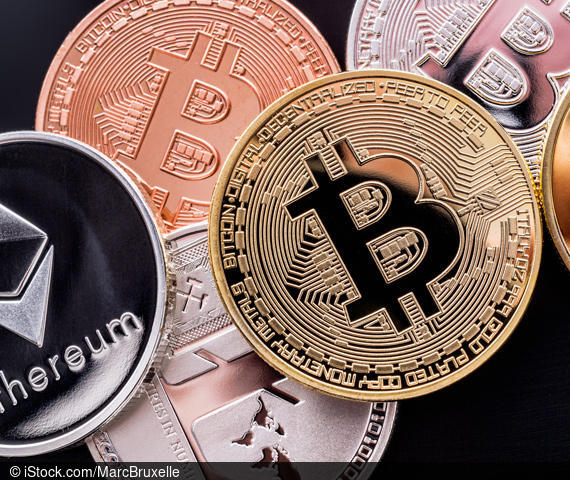Blockchain Technology – It’s Reminiscent of the Gold Rush in the American West
Questions & AnswersTriumphalism and harsh criticism seem to go hand in hand in any discussion of blockchain technology. For instance, while the EU’s digital commissioner Marija Gabriel sees great opportunity for more efficient public administration through blockchain, the head of the International Monetary Fund (IMF), Christine Largarde, has raised concerns over the technology’s use in money laundering and in financing terrorist groups. This discussion has largely been motivated by a recent boom in investment in blockchain technology, with private investors getting involved alongside professional venture capitalists. ZEW researcher Dominik Rehse casts a sceptical eye over the recent hype around this new technology.
What exactly is blockchain technology?
Blockchain technology is a family of technologies that can be used to run distributed computer systems and uses computer cryptography. In the case of Bitcoin, for example, this involves running a shared ledger in which almost entirely anonymous users can use the specially created currency Bitcoin for wire transfers. Other blockchains can be used as the basis for running increasingly complex programmes such as betting platforms. These systems differ from conventional dispersed computer systems in that they involve sophisticated incentive systems to ensure that no individual party has control over the entire system. Blockchains can be run on private networks or public networks, most commonly on the Internet.
How is this technology already being applied?
This technology can be sensibly applied in cases where the functions usually carried out by a trusted third party – and which are generally easily automated – are taken over or entirely new functions are created. In the case of Bitcoin, blockchain assumes the function of financial intermediaries in payment transactions. Pilot projects involving blockchain are, among other things, attempting to make food delivery chains more transparent or to further decentralise the energy market. However, the technology is currently most actively being used as an alternative means of processing payments outside of the existing financial system.
If its practical applications have been limited so far, then why all the hype now?
Public blockchains, in order for the incentive system to function and to ensure interaction between operators and users, regularly emit so-called “coins” or “tokens”, which are what is driving the current investment boom. The market capitalisation of Bitcoin at the end of May 2018 was around 130 billion US dollars, roughly equivalent to the stock market value of software firm SAP. A year ago this figure stood at around only 36 billion US dollars. Developments in the price of Bitcoin and other cryptocurrencies or tokens are driven by price speculation and the expectation that the coins or tokens in question are going to have a high usage value in the future. The calculation of their actual usage value may also include their use for illicit purposes. The first ever issue of coins and tokens through so-called “Initial Coin Offerings” (ICOs) has brought in around ten billion US dollars for the issuers since the start of 2018, with a mixture of both promising and highly dubious offers. It’s reminiscent of the gold rush in the American West.
Where is the capital being invested and exchanged for these blockchain tokens coming from?
This is something we can thus far only guess at. Investigations of illegal online markets do, however, suggest that a considerable proportion of transactions via blockchains and buying and selling of coins and tokens are involved in illegal payments or the circumnavigation of capital flow restrictions and other financial regulations. As part of an ongoing research project at ZEW, we are trying to estimate the extent of cross-border payment transfers being made using the Bitcoin blockchain.
What legislation is there currently to regulate this new technology?
Almost all the financial market authorities of the G9 have already issued consumer warnings regarding coins and tokens, including the Federal Financial Supervisory Authority in Germany. At the same time, blockchain is increasingly being viewed as a key technology for the future and is being promoted by both the EU and a number of central bank projects. We still have a lot to do in the search for a constructive way to deal with the current developments and challenges involving blockchain technology. The German federal government also seems to have recognised the potential and possibly also the dangers of blockchain technology and – according to the coalition agreement – intends to develop a “blockchain strategy”.
